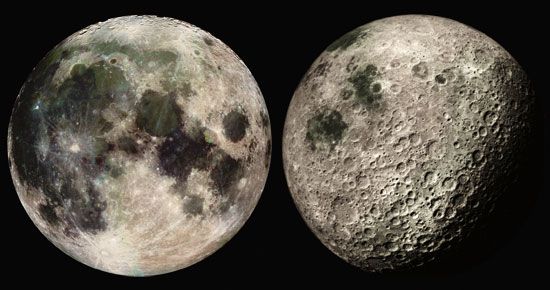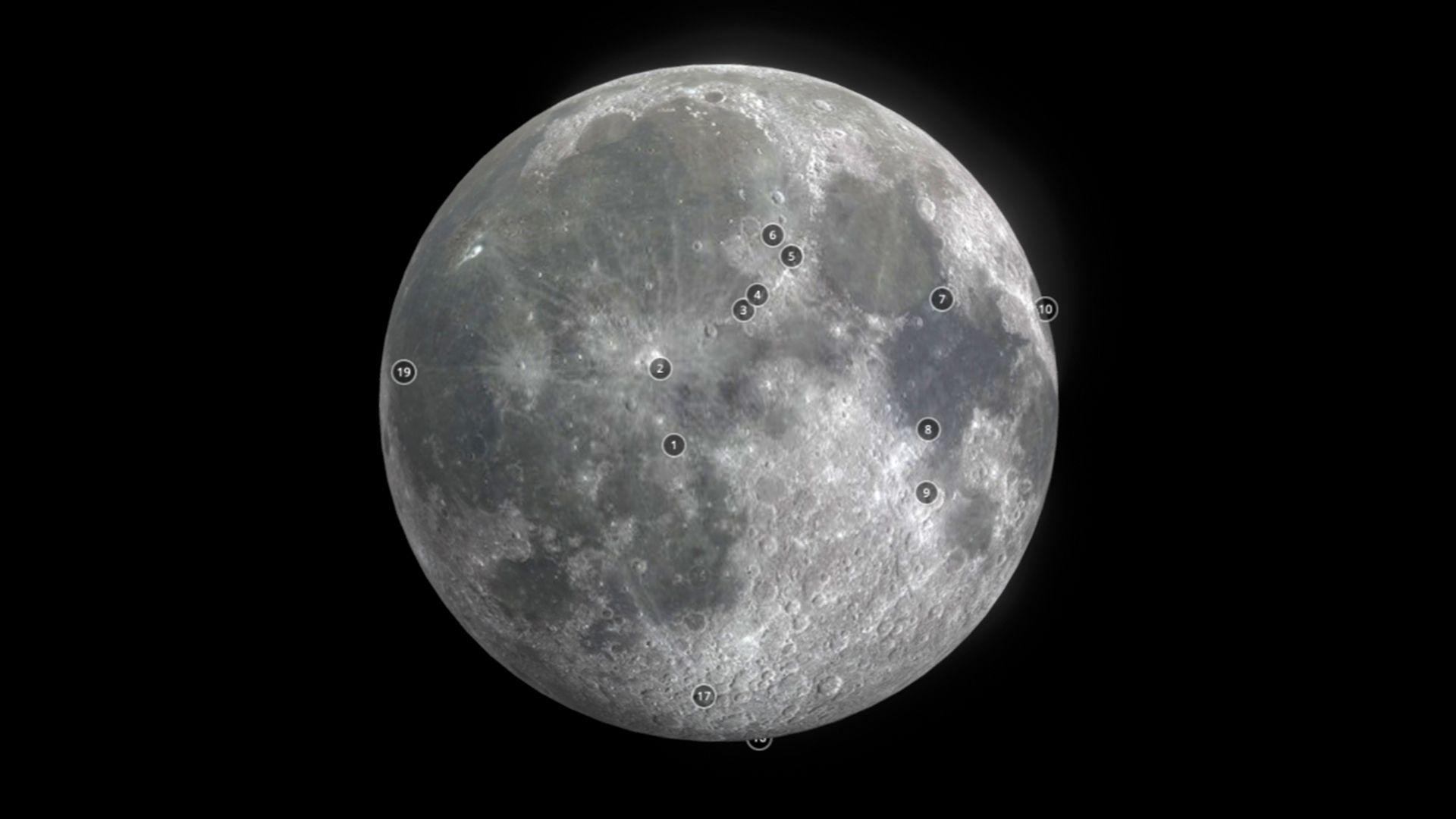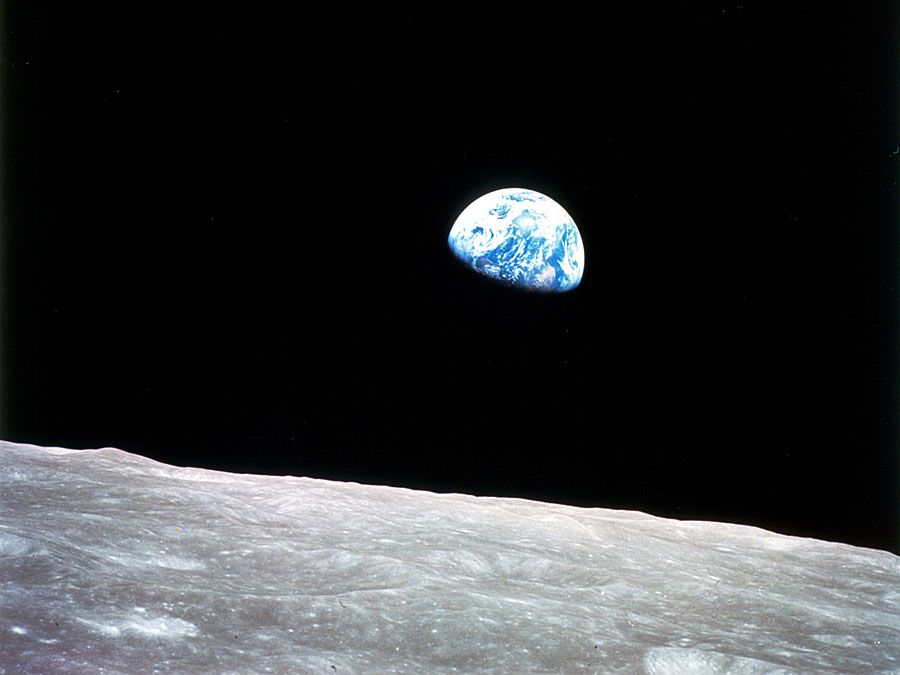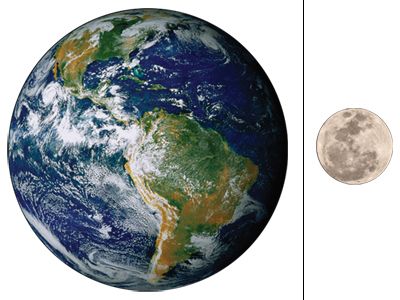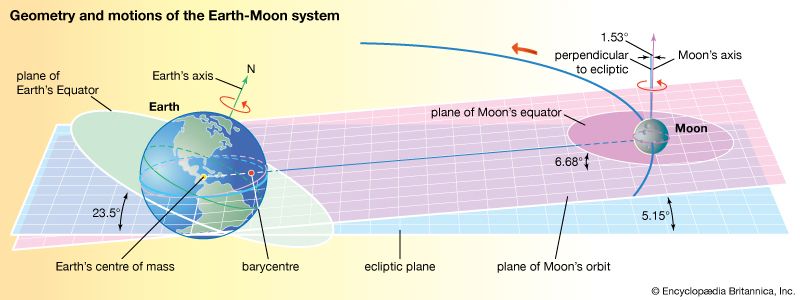Moon
What is the Moon?
Should humans colonize the Moon?
News •
Moon, Earth’s sole natural satellite and nearest large celestial body. Known since prehistoric times, it is the brightest object in the sky after the Sun. It is designated by the symbol ☽. Its name in English, like that of Earth, is of Germanic and Old English derivation.
The Moon’s desolate beauty has been a source of fascination and curiosity throughout history and has inspired a rich cultural and symbolic tradition. In past civilizations the Moon was regarded as a deity, its dominion dramatically manifested in its rhythmic control over the tides and the cycle of female fertility. Ancient lore and legend tell of the power of the Moon to instill spells with magic, to transform humans into beasts, and to send people’s behavior swaying perilously between sanity and lunacy (from the Latin luna, “Moon”). Poets and composers were invoking the Moon’s romantic charms and its darker side, and writers of fiction were conducting their readers on speculative lunar journeys long before Apollo astronauts, in orbit above the Moon, sent back photographs of the reality that human eyes were witnessing for the first time.
Centuries of observation and scientific investigation have been centered on the nature and origin of the Moon. Early studies of the Moon’s motion and position allowed the prediction of tides and led to the development of calendars. The Moon was the first new world on which humans set foot; the information brought back from those expeditions, together with that collected by automated spacecraft and remote-sensing observations, has led to a knowledge of the Moon that surpasses that of any other cosmic body except Earth itself. Although many questions remain about its composition, structure, and history, it has become clear that the Moon holds keys to understanding the origin of Earth and the solar system. Moreover, given its nearness to Earth, its rich potential as a source of materials and energy, and its qualifications as a laboratory for planetary science and a place to learn how to live and work in space for extended times, the Moon remains a prime location for humankind’s first settlements beyond Earth orbit.
| Moon | Earth | approximate ratio (Moon to Earth) | |
|---|---|---|---|
| mean distance from Earth (orbital radius) | 384,400 km | — | — |
| period of orbit around Earth (sidereal period of revolution) | 27.3217 Earth days | — | — |
| inclination of equator to ecliptic plane (Earth's orbital plane) | 1.53° | 23.44° | — |
| inclination of equator to body's own orbital plane (obliquity to orbit) | 6.68° | 23.44° | — |
| inclination of orbit to Earth's Equator | 18.28°−28.58° | — | — |
| eccentricity of orbit around Earth | 0.0549 | — | — |
| recession rate from Earth | 3.8 cm/year | — | — |
| rotation period | synchronous with orbital period | 23.9345 hr | — |
| mean radius | 1,737 km | 6,378 km | 1:4 |
| surface area | 37,900,000 km2 | 510,000,000 km2 (land area, 149,000,000 km2) | 1:14 |
| mass | 0.0735 × 1024 kg | 5.976 × 1024 kg | 1:81 |
| mean density | 3.34 g/cm3 | 5.52 g/cm3 | 1:1.7 |
| mean surface gravity | 162 cm/sec2 | 980 cm/sec2 | 1:6 |
| escape velocity | 2.38 km/sec | 11.2 km/sec | 1:5 |
| mean surface temperature | day, 380 K (224 °F, 107 °C); night, 120 K (−244 °F, −153 °C) | 288 K (59 °F, 15 °C) | — |
| temperature extremes | 396 K (253 °F, 123 °C) to 40 K (−388 °F, −233 °C) | 330 K (134 °F, 56.7 °C) to 184 K (−128.5 °F, −89.2 °C) | — |
| surface pressure | 3 × 10−15 bar | 1 bar | 1:300 trillion |
| atmospheric molecular density | day, 104 molecules/cm3; night, 2 × 105 molecules/cm3 | 2.5 × 1019 molecules/cm3 (at standard temperature and pressure) | about 1:100 trillion |
| average heat flow | 29 mW/m2 | 63 mW/m2 | 1:2.2 |

